How Portsmouth is racing to clean up the city's air pollution problems
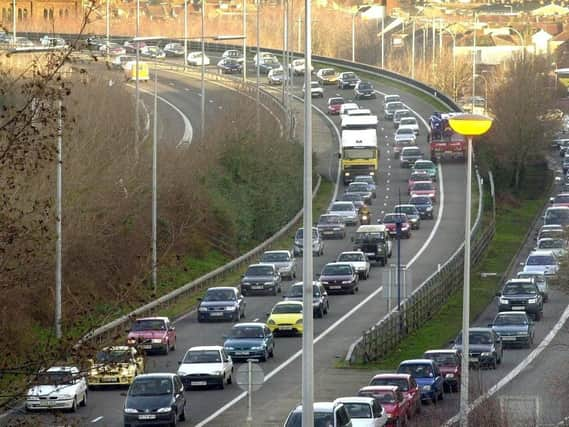

Earlier this year Portsmouth City Council became one of 49 British authorities to declare a climate emergency - since then almost 200 councils have also made the pledge - vowing to consider the environment in every decision it makes in order to achieve net zero carbon emissions by 2030.
The city is recognised by the World Health Organisation as having among the worst air pollution in Britain.
Advertisement
Hide AdAdvertisement
Hide AdAnd now with the threat that a chargeable clean air zone could be imposed by the government, the race is on to find a way to reduce air pollution in the city as soon as possible - for the benefit of both the environment and our health.
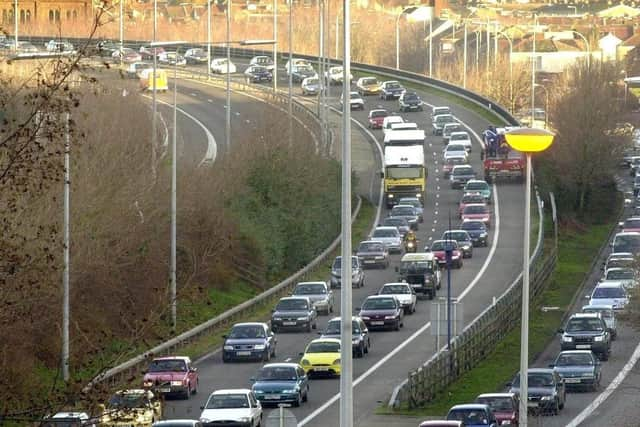

But some measures have been in place for a while and in fact Portsmouth has seen the emissions of one greenhouse gas significantly reduced in recent years.
A main contributor towards warming temperatures is carbon dioxide (CO2), which is produced when commonly used fuels such as wood, coal, natural gas, gasoline and oil are burned, and accounts for 81 per cent of greenhouse gases in the UK.
So perhaps it comes as a surprise that CO2 emissions in the city have actually decreased by an impressive 36 per cent between 2005 and 2017 - from 1,280.2 kilotonnes to 813.3 kilotonnes.
Advertisement
Hide AdAdvertisement
Hide AdAccording to figures from the most recent government dataset on greenhouse gases this is slightly better than the national trend, as the UK reduced its CO2 emissions by 33 per cent in the same time.
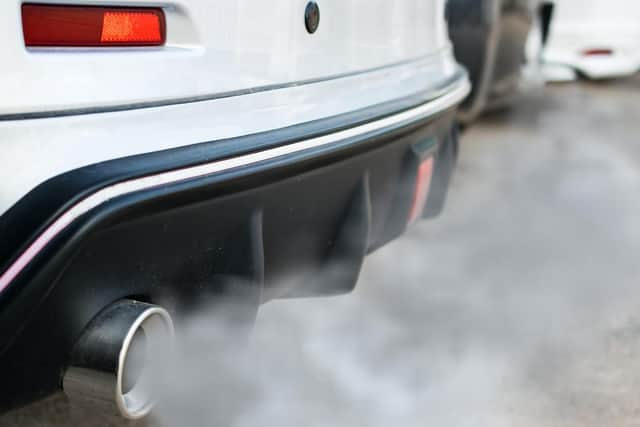

And between 2016 and 2017, CO2 emissions decreased in 358 out of the 391 local authorities in the UK.
Both locally and across the country this was mainly due to an increased uptake in using renewable energy as an electricity source - as opposed to using coal and gas.
In Portsmouth this change in energy provider accounted for a 72 per cent decrease in emissions between 2005 and 2017 - although the electricity generation might not have happened in the city as the data is based on where the energy is consumed.
Advertisement
Hide AdAdvertisement
Hide AdThe biggest drop in CO2 emissions in Portsmouth were in the industrial and commercial sector (including our ports) as well as domestically (in homes) - which both almost halved in 12 years.


So why are we concerned about car pollution from cars?
But in contrast, emissions from transport in the city - described as ‘mostly road transport’ - barely fell at the same time. It dropped from 339.8 kilotonnes in 2005 to 305.9 kilotonnes in 2017.
A lot of this was due to the fact that modern cars are more environmentally friendly. Car ownership in the city though is something that has steadily increased - in 2011 there were an average of 397 cars per 1,000 people in the city, which was a 2.1 per cent increase on numbers in 2001.
For council leader Councillor Gerald Vernon-Jackson, more needed to be done. ‘We know that air pollution is coming down, it’s getting better. But it’s not getting better fast enough,’ he said.
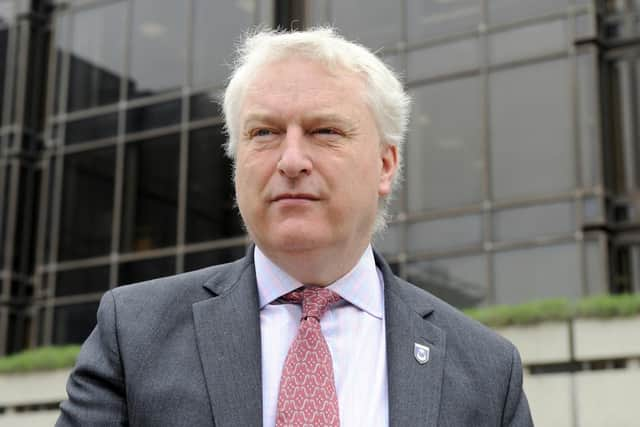

Advertisement
Hide AdAdvertisement
Hide Ad‘Cars might pollute less than they used to but it’s still not enough.’
But it is not just CO2 that is emitted from cars. More recently the concern has been around another greenhouse gas, nitrogen dioxide (NO2), which is linked to respiratory problems including flu, bronchitis and lung infections.
And it is NO2 that is now being monitored in certain areas of the city to determine whether the issue is getting worse. The most severe of these areas are known as air quality management areas.
There are five areas:
:: Fratton Bridge to Kingston Road, continuing into London Road until the roundabout junction with Stubbington Avenue and Gladys Avenue
:: the Hampshire Terrace and the St Michael's Road gyratory
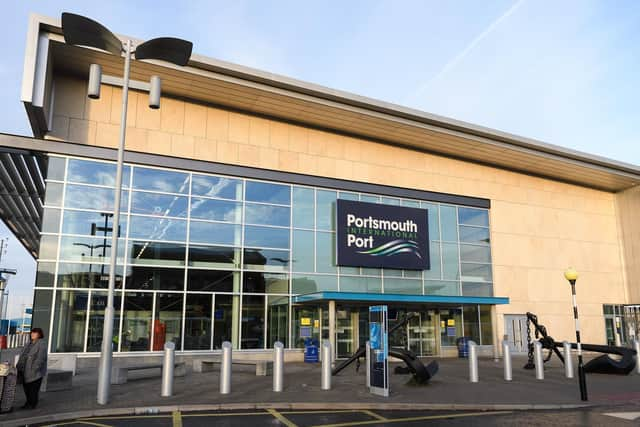

Advertisement
Hide AdAdvertisement
Hide Ad:: The southern section of Eastern Road from Sword Sands Road south into Velder Avenue and its junction with Milton Road
:: from Rudmore roundabout south to Church Street roundabout
:: the greater part of Queen Street from The Hard to St James's Street
All these types of areas, apart from the one at Eastern Road, registered higher levels of NO2 than the EU safe level of 40 micrograms of NO2 per cubic metre of air (µg/m3) in 2018.
Advertisement
Hide AdAdvertisement
Hide AdIn total 14 spots out of 53 in the city were monitored as having higher than 40µg/m3.
Unless the council can show this can be reduced a clean air zone will be imposed - with people charged to drive in the city.
What’s being done to continue to tackle CO2?
It might seem like CO2 levels will continue to fall on their own due to our change in energy generation - but research has suggested this will start to plateau.
This, coupled with the threat from NO2 levels, has spurred on a sense of urgency when it comes to climate change.
Advertisement
Hide AdAdvertisement
Hide AdFor the first time ever Portsmouth council now has a specific environment and climate change portfolio holder - a position that was created this year.
Cabinet member Councillor Dave Ashmore explained some of the work that is currently underway in the city.
He said: ‘We've invested in lots of initiatives aimed at reducing CO2 levels. We're using new technologies like wind capture, solar panels and electric forklifts to reduce CO2 emissions at the port; and it's our ambition to be the first zero-emission major port in the UK under the government’s clean maritime plan.’
Already steps have been taken at the Portsmouth International Port to become zero-emission with wind catchers that act as air conditioning, sea-water harvesting heats the building and flushes the toilets, LED lighting installed across the site and electric charging points for vehicles.
Advertisement
Hide AdAdvertisement
Hide AdAnd by the end of 2020 it is planned that all ships will run on low sulphur fuels as a minimum.
Other steps for the rest of Portsmouth include tree planting and solar panels. Cllr Ashmore added: ‘We've installed more than 20,000 solar panels throughout the city, which saves more than 1,600 tonnes of CO2 emissions per annum. Upgrading to LED street lighting has resulted in a 30 per cent reduction in energy and saves over 1,000 tonnes of CO2 a year.
‘53,400 trees and shrubs have been planted at Horsea Island and we're reviewing parks, open spaces, highways and verges to see where we can plant more meadows, shrubs and trees to improve air quality.’
How a clean air zone would work
UNLESS Portsmouth City Council can prove to the government that alternative measures would have the same impact as a clean air zone on reducing air pollution, people will have to pay to use their cars in the city.
Advertisement
Hide AdAdvertisement
Hide AdAlthough the council is still working on a plan to be presented in October, council leader Councillor Gerald Vernon-Jackson admitted a clean air zone was looking ‘quite likely.’
He said: ‘We have written to the government with lots of suggestions for things they could do to reduce air pollution such as free bus passes, stopping the targets for housebuilding and a scrappage scheme for old cars. But the government isn’t interested in those ideas.
‘The only thing it’s interested in is imposing a clean air zone, which is looking quite likely.’
But how would this work?
The most important thing to note is that this would only affect drivers with cars of a certain age - petrol cars built prior to 2006 and diesel cars from before 2015, due to the level of CO2 and NO2 they produce. And of course electric cars would be exempt.
There are also four different types of clean air zones:
Just taxis and private hire
Taxis, private hire and lorries
Taxis, private hire, lorries and vans
Taxis, private hire, lorries, vans and private cars
Advertisement
Hide AdAdvertisement
Hide AdThe type of clean air zone required will depend on which can be shown to bring forward compliance on air pollution levels in the shortest possible time.
Other details of the zone including the size of the zone, the hours of operation, exemptions for certain groups of people and any mitigation measures to support local people to change their behaviour would be decided by the council following a public consultation.
To enforce the zone would be a network of automatic number plate recognition cameras located at junctions throughout the zone. It is likely that a single daily charge would be issued to each non-compliant vehicle entering or driving within the zone - this charge could range from £8 to £20 a day per vehicle.
Is this enough?
FOR Tim Sheerman-Chase, from Portsmouth’s Green Party, the government needs to ‘step up’. He said: ‘Some sources of CO2 like electricity generation have seen a steady reduction, while others like central heating systems and transport have had little progress.
Advertisement
Hide AdAdvertisement
Hide Ad‘The government needs to consider something like the green new deal which would heavily invest in heating efficient and renewable energy.’
He hoped the threat of a clean air zone would see change in the city. ‘In terms of NO2 levels - these are mainly caused by diesel engine emissions,’ he said. ‘Much more ambitious measures are needed to improve transport, including greatly improved public transport and restrictions on car usage.
‘Portsmouth City Council has so far relied on encouraging people to use sustainable transport but according to a recent Public Health England report, there is no evidence that this is effective.
‘The department for environment, food and rural affairs has instructed the council to produce a plan by October 2019 to reduce emissions as quickly as possible. The council must put forward ambitious measures to achieve the legal requirement for air quality and continue to improve air quality after the basic goal is met.’
Advertisement
Hide AdAdvertisement
Hide AdA spokesman for Extinction Rebellion Portsmouth added: ‘Of course more needs to be done. The science is 100 per cent clear: we need both as a city, country and global community to be at zero emissions. We actually need to be taking carbon out of the air, not adding more.
‘Climate chaos is already upon us because everyone has passed the buck and evaded responsibility for their own emissions by pointing to someone else's. Let's stop passing the buck.’